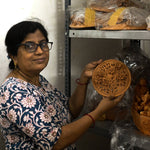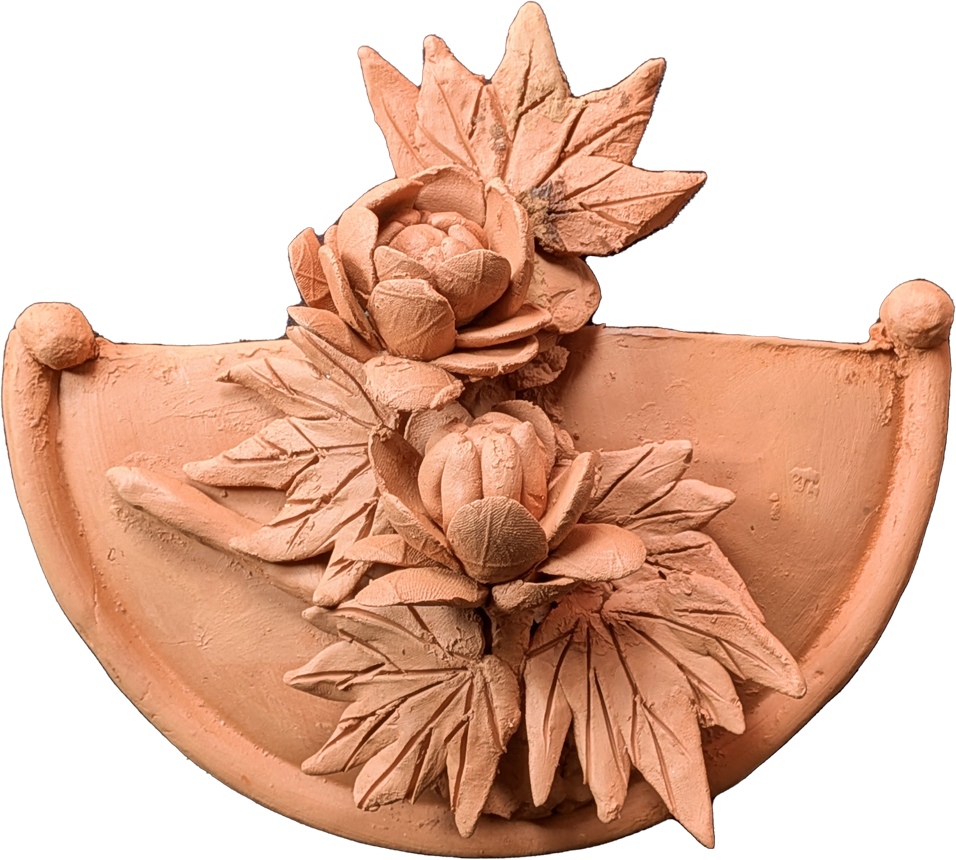Terracotta artwork is one of the oldest and most cherished art forms in India, deeply rooted in cultural heritage and artistic tradition. Crafted from natural clay, this traditional Indian art is fired at high temperatures to create durable, earthy sculptures, pottery, and architectural elements. Known for its rustic appeal and timeless elegance, terracotta art in India reflects the essence of nature, mythology, and daily life, making it a significant part of the art and culture of India.
The versatility of Indian terracotta art extends from traditional sculptures to modern home decor, offering a blend of historical charm and contemporary aesthetics. Whether as handmade terracotta wall art, exquisite figurines, or temple sculptures, each piece is an embodiment of India’s artistic heritage and ancient craftsmanship.
For art lovers and collectors, buying terracotta art online is a great way to own a piece of Indian folk art that carries centuries of tradition and craftsmanship.
The Rich History of Terracotta Art in India
Origins and Evolution
The history of terracotta art in India dates back to the Indus Valley Civilization (2500 BCE), where excavations have uncovered terracotta figurines, pottery, and seals used in daily life and religious rituals. This art form was widely practiced in Mesopotamia, Egypt, and Greece, but India's terracotta craftsmanship developed distinct styles influenced by local traditions, mythology, and religious beliefs.
During the Harappan period, terracotta was used for household pottery, votive figurines, and decorative tiles, evolving into a more refined art form in the Mauryan and Gupta periods. Over the centuries, it became an essential element of temple architecture, religious sculptures, and folk traditions, solidifying its place as a crucial aspect of historical paintings in India and sculptural heritage.
Even today, famous terracotta artworks in India continue to captivate art lovers with their raw appeal and intricate craftsmanship, making them an integral part of Indian traditional artwork.
Materials and Techniques Used in Terracotta Art
Crafting Process of Traditional Terracotta Paintings and Sculptures
The primary material in Indian terracotta painting and sculpture is natural clay, which is collected, purified, and kneaded to achieve the right consistency. The traditional painting techniques of India are often applied to terracotta wall art and sculptures, ensuring every piece retains its authenticity and artistic essence.
🔹 Molding & Sculpting – Artisans hand-mold clay or use wooden/carved molds to shape intricate Indian sculptures and pottery.
🔹 Drying Process – Pieces are sun-dried to remove moisture and prevent cracking during firing.
🔹 Kiln Firing – Objects are fired in a kiln at temperatures between 600-1000°C, achieving durability and strength.
🔹 Surface Treatment – Depending on the design, artisans may burnish, paint, or glaze the pieces with natural pigments to enhance their visual appeal.
The adaptability of terracotta allows it to be used in Indian wall art decor, garden sculptures, home decor accents, and architectural embellishments, making it one of the most versatile forms of Indian contemporary art.
Types of Terracotta Art in India
Famous Regional Styles of Indian Terracotta Art
Each region in India has developed unique styles of terracotta art, reflecting local cultural identity and craftsmanship. Some of the most famous Indian terracotta paintings and sculptures include:
-
Molela Terracotta Plaques (Rajasthan) – Known for vibrant relief work depicting deities, village scenes, and folk tales.
-
Bankura Horses (West Bengal) – Celebrated for their stylized forms, rhythmic proportions, and temple offerings.
-
Bishnupur Terracotta Temples (West Bengal) – Exquisite temple reliefs with intricate mythological storytelling.
-
Tamil Nadu’s Aiyanar Horses – Large terracotta horse sculptures placed in temple courtyards as guardians of villages.
-
Gorakhpur Terracotta (Uttar Pradesh) – Famous for intricate animal figurines and decorative pottery.
-
Kerala’s Terracotta Roof Tiles & Sculptures – Used in traditional temple architecture and home decor.
Each of these art forms represents a fusion of spiritual significance and artistic brilliance, making them an integral part of traditional folk art of India.
Significance of Terracotta in Indian Art and Culture
Terracotta art holds deep cultural, spiritual, and aesthetic significance in India, serving as a symbol of heritage, sustainability, and storytelling.
-
Religious & Mythological Symbolism – Many Indian sculptures and figurines are made from terracotta, depicting Hindu gods, goddesses, and folklore.
-
Sustainable & Eco-Friendly – As a natural and biodegradable material, terracotta aligns with environmentally friendly art practices.
-
Artistic Storytelling – From historical paintings in India to narrative reliefs on temple walls, terracotta preserves ancient traditions through visual storytelling.
-
Home & Garden Decor – Indian wall art decor made from terracotta adds a rustic, earthy charm to homes and outdoor spaces.
-
Handmade Artistry & Livelihood – Supporting Indian terracotta artisans helps sustain traditional crafts and local economies.
This age-old art continues to evolve, blending modern Indian art techniques with classic craftsmanship, ensuring its relevance in contemporary art markets.
Where to Buy Authentic Terracotta Art Online
MeMeraki offers an exclusive collection of Indian terracotta artworks, including:
-
Handmade Terracotta Sculptures – Perfect for home decor, gifting, and temple art.
-
Traditional Terracotta Wall Art – Featuring intricate relief work and mythological themes.
-
Decorative Indian Pottery – A stunning addition to modern Indian home interiors.
-
Custom Terracotta Art Pieces – Get personalized, handcrafted terracotta artworks to suit your aesthetic preferences.
FAQs on Terracotta Art
Can I customize a terracotta piece?
Yes! MeMeraki offers customization options, allowing you to select specific sizes, colors, and themes for your terracotta art pieces. Contact us for more details!
Why are some terracotta products priced higher than others?
Pricing depends on factors such as:
Each piece is handcrafted, making it a unique work of art.
Terracotta pieces can be displayed as tabletop sculptures, wall hangings, or centerpiece decor. Ensure they are kept in stable locations and away from excessive moisture to preserve their beauty.
Conclusion: A Tribute to India's Timeless Terracotta Art
Terracotta art in India is more than just aesthetic decor—it is a historical, cultural, and spiritual treasure. Whether you are an art enthusiast, collector, or someone looking to buy Indian artwork online, terracotta offers a unique blend of tradition and modern elegance.
Show Less



























































